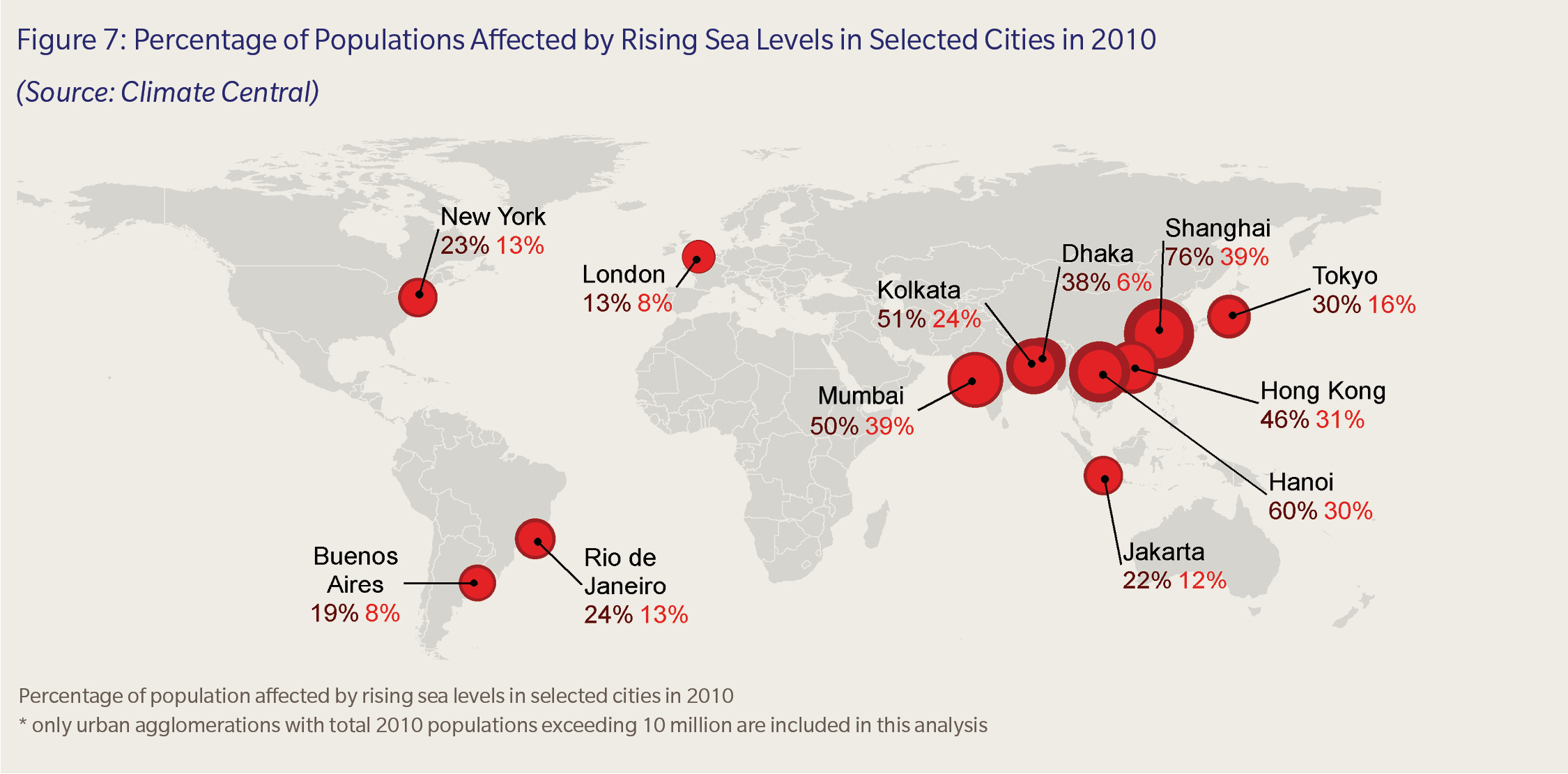
Sea level rise due to climate change is considered to be one of the biggest threats to properties and infrastructure worldwide. Global (mean) sea levels rose by about eight inches between 1901 and 2010, and the rate of increase appears to have accelerated in recent decades. Guy Carpenter's new report, Protecting our Planet and the Public Purse, investigates multiple climate change scenarios and available mitigation options for various degrees of rising sea levels.
The Intergovernmental Panel on Climate Change (IPCC) projects a further rise of between seven inches and 15 inches by the 2050s, and an additional 12 to 44 inches by the 2090s (see Table 1). More extreme sea level rise scenarios may occur depending on the stability of the Antarctic ice sheets, and an increase of eight feet by the year 2100 is possible (although not probable).

Sea level rise will inevitably bring wide-ranging consequences to coastal properties across the globe. New research published by Climate Central in Nature Communications argues that the consequences of rising sea levels have been underestimated and that some 150 million people are now living on land that will be below high-tide line by 2050.
Impacts on mega-cities, urban centers that have populations of more than 10 million, will be particularly pronounced. Figure 7 illustrates the share of certain cities’ 2010 populations that would be below sea level in the event of particular increases in global temperature. The lighter shade of red depicts the projected percentage of a city’s population that would be situated below sea level assuming a 2°C increase in global temperature while the darker red provides corresponding projections assuming a 4°C increase.
It is important to note that Figure 7 focuses exclusively on mega-cities exposed to sea level rise and does not address other underinsured natural perils. Nor does it include smaller population centers that do not meet the 10 million mega-city threshold. By 2030, the United Nations expects 60 percent of the world’s population will be living in cities, bringing immense implications to economic and social policy.
Mitigation initiatives need to be front and center of government policy in responding to these developments. After all, protective measures like seawalls and other barriers have enabled over 110 million people to live in places below the high tide line for years. But given the accelerated rise in sea levels projected to take place over the next several decades, vulnerable communities will need to invest vastly greater sums in such defenses if they are to survive.

Footnotes: 4. IPCC SROCC, 2019: Special Report on the Ocean and Cryosphere in a Changing Climate, Intergovernmental Panel on Climate Change. https://www.ipcc.ch/srocc/home/, accessed November, 2019.